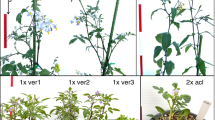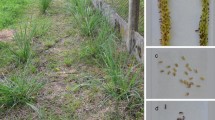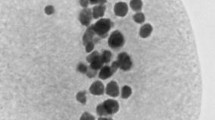Abstract
To discover highly apomictic and amphimictic Allium tuberosum diploids, we evaluated the degree of apomixis in three dihaploids (2n=16, 2x), KaD2, TeD1 and GMD1, derived from highly apomictic tetraploids. The degree of apomixis, calculated as the percentage of diploid seedlings in the progeny obtained after cross-pollination with tetraploid cultivars, was 96% in KaD2, 7% in TeD1 and 39% in GMD1. In addition to this general index of apomictic nature, two analytical indices were evaluated in KaD2 and TeD1. The degree of diplospory, calculated as the percentage of endoreduplicated embryo-sac mother cells, was 96% in KaD2 and 2% in TeD1. The degree of parthenogenesis, calculated as the percentage of ovules with the egg cell developing parthenogenetically, was 98% in KaD2 and 10% in TeD1. Among angiosperms with gametophytic apomixis, KaD2 is the first diploid apomict whose reproductive mode has been fully described by these three quantitative indices of apomictic nature. And TeD1 is the first highly amphimictic plant found in the A. tuberosum complex. Although TeD1 is poorly fertile, the present results encourage further screening trials for highly fertile, highly amphimictic dihaploids, which may be effective counterparts to KaD2 in diploid-level cross experiments to genetically analyze apomixis in A. tuberosum.
Similar content being viewed by others
Author information
Authors and Affiliations
Additional information
Received: 4 December 1995 / Revision accepted: 8 May 1996
Rights and permissions
About this article
Cite this article
Kojima, A., Nagato, Y. Discovery of highly apomictic and highly amphimictic dihaploids in Allium tuberosum . Sex Plant Reprod 10, 8–12 (1997). https://doi.org/10.1007/s004970050061
Issue Date:
DOI: https://doi.org/10.1007/s004970050061




